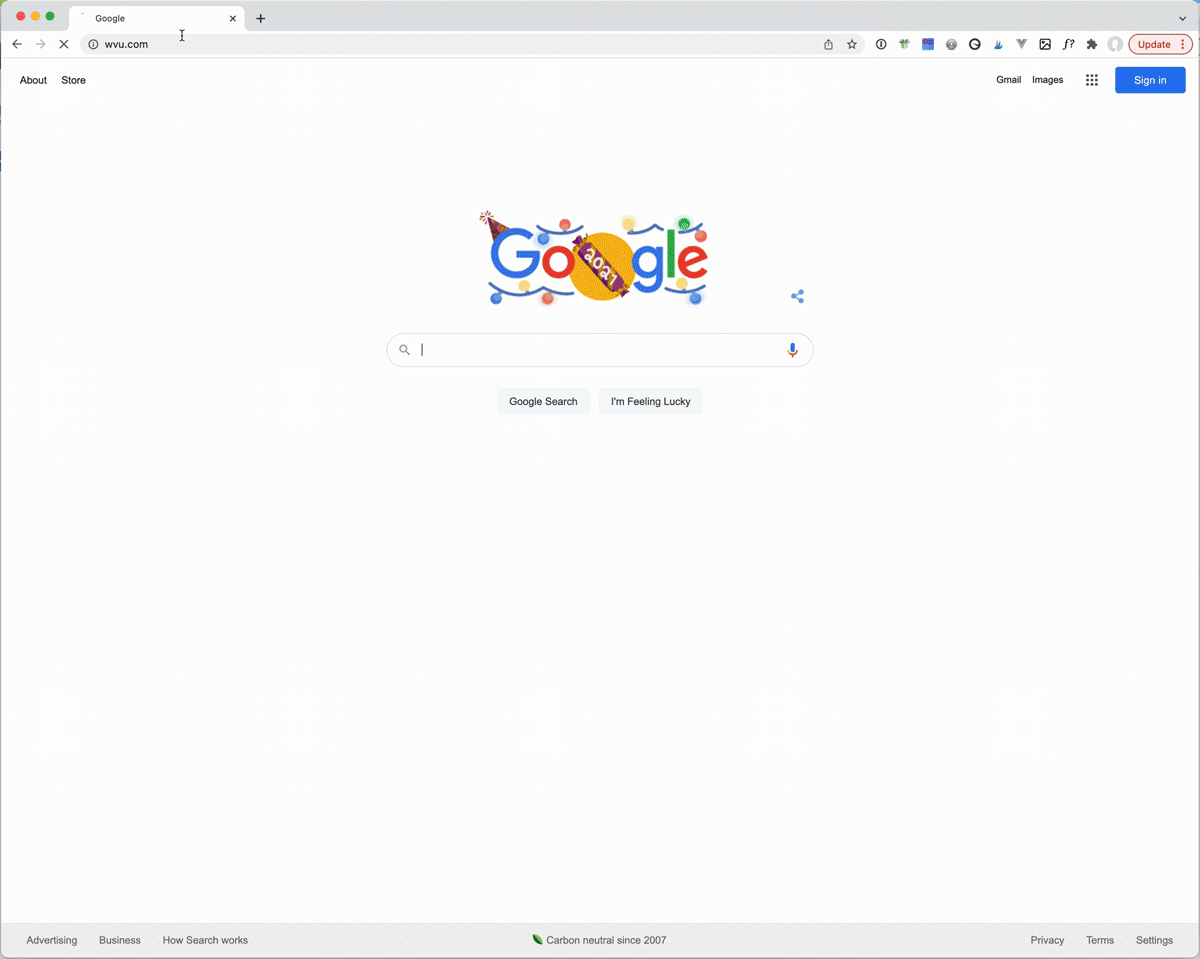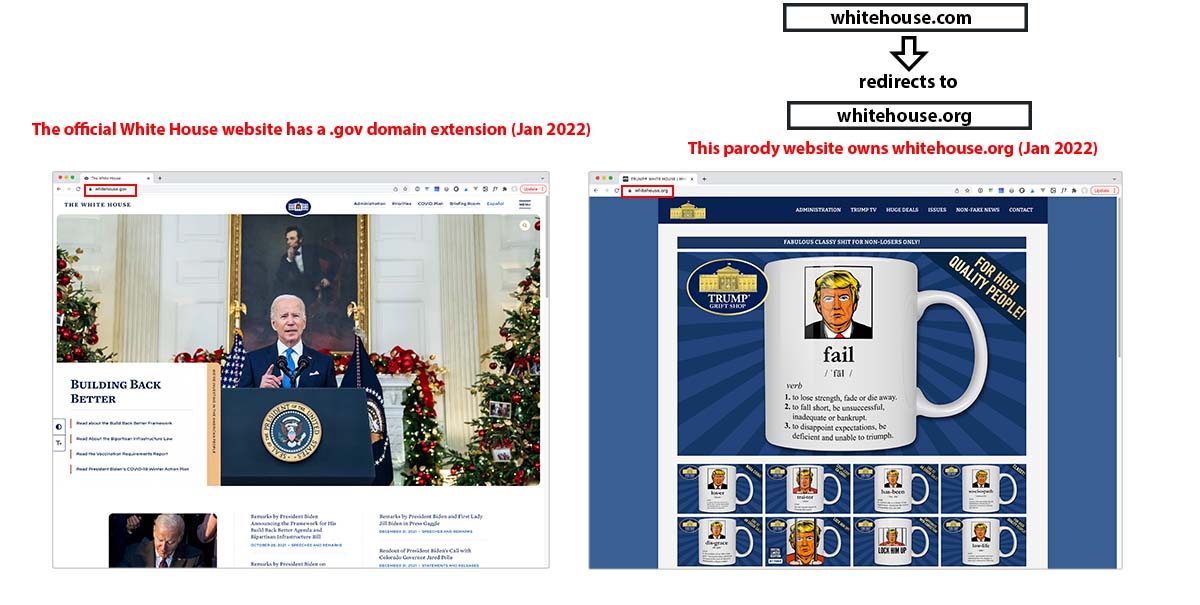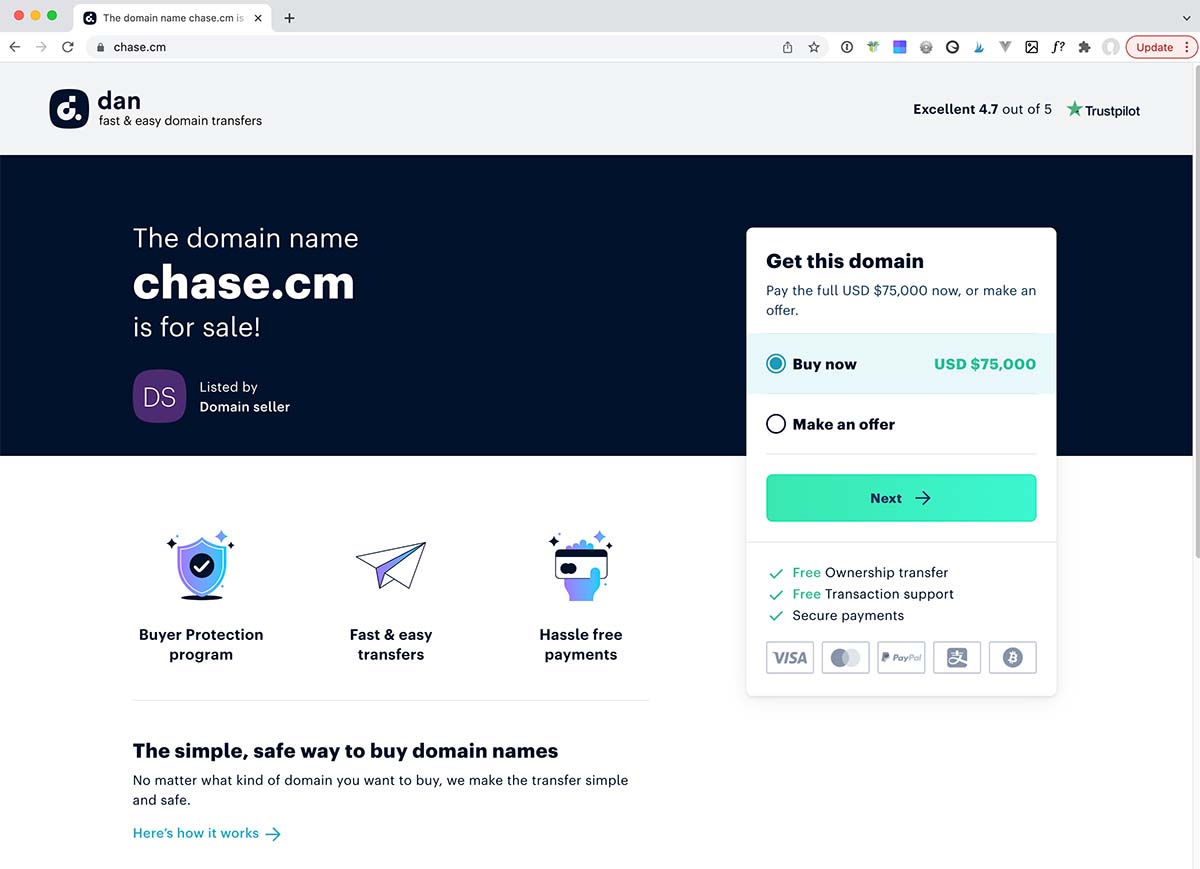The primary reason to use a domain redirect is to improve user experience and customer satisfaction.
Well-designed user experiences work behind the scenes, with the design details often going unnoticed by the end user. Domain redirects can be essential to customer satisfaction and positively reinforce a good user experience. Here are scenarios where this plays out.
7 Reasons to use a domain redirect in your online strategy
The following reasons explain why establishing domain redirects for your website domain may make sense for your organization.
- Create domain redirects for all alternative domain extensions that you own
- Create domain redirects for commonly mistyped URLs
- Create domain redirects when your business changes names
- Create domain redirects when you finally snag your dream domain name
- Create domain redirects for your brand’s tagline
- Create domain redirects for memorable and short URLs to use in marketing and advertising.
- Create domain redirects for past, less desirable domain names
If you’re a new business, a domain redirect might be used to point to a social media account, especially when your website is being built.
Reason 1: Create domain redirects for all alternative domain extensions that you own
Domain extensions are also known as top-level domains (TLDs). Common domain extensions are .com, .edu, .gov, .net, or .shop. Less common TLDs but important for users who often make typos are the domain extensions .cm, .co, and .om.
Savvy businesses, institutions, and organizations should purchase many relevant domain extensions with the intent to set the alternative TLDs as redirects to the primary domain name. This redirect technique is good for usability and keeps malicious offenders from redirecting your intended traffic to websites owned by cybersquatters.
Often known as typosquatting, Wikipedia defines typosquatting as “a form of cybersquatting, and possibly brandjacking which relies on mistakes such as typos made by Internet users when inputting a website address into a web browser. Also called URL hijacking, a sting site, or a fake URL.” (For more info read this NBC news article that shares some insights about the security threats to consumers because of typosquatting and McAfee’s article discusses the techniques used on these typosquatter’s copycat sites).
Example of WVU’s website redirecting from the alternative wvu.com domain to the primary domain name of wvu.edu
West Virginia University is a public university, and therefore, the extension of .edu is very appropriate, but as a fallback, WVU purchased the domain extension .com, too. This allows parents and potential students to automatically be redirected to the correct, actual .edu website, even if they type .com by mistake. Owning the .com address of the domain protects users by keeping bad actors from purchasing and using wvu.com inappropriately.

Of interest: The U.S. White House owns the government domain for whitehouse.gov. However, the government does not own whitehouse.com or whitehouse.org. In the 1990s, whitehouse.com (the .com extension) was an adult-content website! This has been remedied, but non-government entities still own whitehouse.com and whitehouse.org. As of Dec 2023, whitehouse.org is redirected to a Mastodon page, and whitehouse.com is an election betting site.
In 2022, a parody website group owned whitehouse.org, and whitehouse.com was redirecting to whitehouse.org.

Future proof
If you’re a big organization or plan to become one, you should plan ahead by purchasing the .cm, .co, and .om domain extensions. The .cm extension is the country code indicator for Cameroon, but anyone can buy this extension. At over $100 each, .cm extensions are a relatively expensive domain registration compared to $15 registrations for new .com extensions; however, excluding or missing typing the “o” in .com is a pretty easy mistake to make. Similarly, Oman’s country-code domain extension is .om, and .co is assigned to Columbia.
Many large companies have proactively grabbed some or all of these common typo domain extensions.
Chevron, Target, and USAA are great examples of companies that were proactive and own the .cm version of their primary domain. Good job, Chevron, Target, and USAA!
chevron.com and chevron.cm. Chevron.cm is an alternative domain extension that redirects to Chevron’s primary domain name: chevron.com.
Examples of brands that were not as future thinking and have not purchased their company’s .cm extension are ESPN, Chase (although it appears Chase could currently buy chase.cm for $100K, up from 75K in 2022), and TurboTax. Whoops!

Reason 2: Create domain redirects for commonly mistyped URLs
The warning message “This site can’t be reached” is not ideal. If your website URL is easily misspelled, a domain redirect for that incorrect or typo URL improves customer satisfaction.
My advice: purchase common misspellings of your primary domain name, common typos of your primary domain, and also purchase plural/singular versions, too.
Here’s an example from my day-to-day:
Today, I tried to go to omnicard.com/cards to check my gift card’s balance. I mistyped the URL and made OmniCard plural. omnicards.com/cards gave me an error message. For a moment, I thought, “shoot; the company went out of business.” Then I checked the address and realized I had made a typing mistake.
Anticipating this common user mistake, OmniCards could have proactively purchased the plural domain name and created a domain redirect so that the incorrect URL would automatically redirect me to the primary intended URL.
In this hypothetical scenario, whether I would have typed cards as plural or singular, I would have reached the intended site (and never know about my typo). In this case, proactive domain redirects would create a seamless experience for the user and would be an inexpensive way for a company to improve user satisfaction.
Facebook uses redirects for URL misspellings.
If you’re a large company, you should 100% have redirects for common typos and misspellings. Facebook is an example of a large company improving the usability of its flagship product in a way that 99% of users will never realize but likely have unknowingly experienced the benefits.
Facebook owns and actively redirects users to facebook.com even if the URL typed in is misspelled as facbook.com (notice the missing letter “e”) or faceboook.com (notice that there are three of the letter “o”). Fat-fingerers rejoice, you won’t see an error when you mistype Facebook!
However, Facebook did not successfully purchase facebook.cm (omit the “o” in .com) before someone else did. Whoops!
Reason 3: Create domain redirects when your business changes names
Sometimes, changing your business’s primary domain name is unavoidable. One such scenario is a corporate name change.
Take, for instance, the purchase of BB&T by Truist. After the acquisition, the domain name bbt.com is still crucial to keep active. As a consumer, I appreciate that when I forget my “new” bank’s name, I can still type in the URL I remember, bbt.com, and automatically be redirected to the truist.com home page. (Ah ha! Truist. That’s my bank’s name, again.) Also, all my saved bookmarks still take me where I’m trying to go. Important heavily trafficked pages from BB&T’s website now have specific redirects to their equivalent pages on the new truist.com site.
For instance, the URL bbt.com/online-access/online-banking/default.page now directs to the Truist equivalent page truist.com/digital-banking
Well done, Truist and BB&T!
Renaming your local business
Local businesses can also benefit from using URL redirects when their company rebrands. Keeping your former business name on the content of your pages will help with SEO and customers still being able to find your website and keeping your previous domain name active, and simply making it redirect to your new preferred domain.
Remember, if your company previously had a domain name and you stopped using that domain, all the online directories, search results, past emails, and social posts that link customers to your previous website will now be broken.
Reason 4: Create domain redirects when you finally snag your dream domain name
Sometimes, you must launch your website with a less-than-ideal domain name. I’m talking to you all .net top-level domain URLs or web addresses that include dashes!
When you finally snag your preferred domain name (domain backorders are awesome!), you’ll want to redirect your less-than-perfect starter domain name to your new preferred or primary domain name.
Reason 5: Create domain redirects for your brand’s tagline
If you are an organization spending big bucks on making your tagline a household phrase, you should also own your tagline’s web address.
Take Nike, for example; their tagline “Just Do It” has a domain called justdoit.com that redirects to nike.com. Not only does this keep the brand’s assets all pointing to websites that Nike owns, but it also gives the company flexibility to run advertising campaigns with this tagline URL. At some point, justdoit.com could point to any URL Nike wants, perhaps something like nike.com/justdoit.
Reason 6: Create domain redirects for memorable and short URLs to use in marketing and advertising
Similar to how Nike has a domain name for the tagline “Just Do It,” Nike also purchased domains for their product lines. For example, nikerunning.com currently redirects to https://www.nike.com/running, and nikebasketball.com turns to https://www.nike.com/basketball. These are smart examples of vanity domain names redirecting to the main/primary nike.com site.
Nike uses domain redirects for advertising and marketing
Nikebasketball.com is well known by consumers. This URL is used as a short, memorable domain name for Nike’s basketball advertising campaigns, but did you realize that nikebasketball.com does not actually exist? This vanity domain name redirects users to https://www.nike.com/basketball.

Essentially, rather than Nike advertising nike.com/basketball, Nike advertises with the domain nikebasketball.com. A domain redirect keeps all the earned “SEO juice” pointing toward Nike’s primary nike.com website while allowing the Nike marketing team to use well-branded domain addresses for Nike sports such as Running and Basketball.
Of interest, both nikefutball.com and nikefootball.com redirect to Soccer.
Reason 7: Create domain redirects for past, less desirable domain names
Sometimes, companies purchase and use domain names that are less than desirable because they don’t know better or because of availability.
For instance, maybe a company purchases and starts using a domain name with dashes or tacks on the state they live in or serve. Once the more desirable domain name has been purchased, the company should keep and simply redirect the older domain to the newer, more desirable domain name.
An example would be if you initially used my-company-name.com (with dashes) and eventually purchased mycompanyname.com (with no dashes) or my-company-state.com and eventually purchased mycompany.com.
If you find this list helpful or have another “reason to add a redirect” to share, please leave a comment.
Working in GoDaddy and struggling with domain forwarding? Cloudflare might be your saving grace. Here’s a post that may help.

